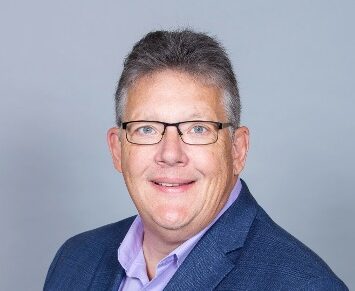
Historically, cable operators that wanted to modernize their hybrid fiber-coax (HFC) networks had to buy vendor-proprietary nodes that locked them into the vendor once purchased. Once an operator was locked in with a vendor, they were likely a “forever” customer.
But thanks to GAP (Generic Access Platform) and Vecima’s future-forward vision, technology advancements, and SCTE industry standards, forever customers are forever free. Instead of being tied to one vendor indefinitely, operators can choose the best solutions from multiple providers – all within the open frame work of our Entra® EN9000 Generic Access Platform (GAP) node. More importantly, they can evolve their networks faster and easier than ever before without the constraints of locked-in vendor relationships.
Early Days of HFC Networks
Before the shift to DAA (Digital Access Architecture), HFC networks relied on analog RF optical node technology, which had distance, bandwidth, and noise limitations. Analog nodes were populated with multiple optical receivers and reverse transmitters. When nodes failed, operators deployed technicians in the field to find and fix affected nodes. Remote monitoring wasn’t common as it required a dedicated transponder. Instead, customers were often the monitoring point when they reported outages. This meant operators faced long repair times and costly truck rolls to resolve basic issues.
Analog HFC networks also need periodic maintenance that requires skilled labor. Network expansion was equally challenging, as adding capacity required reconfiguring or adding hardware in the headend, hub and the field. The entire process was resource-intensive, making it difficult to scale or introduce new services quickly. As a result, operators had to make difficult trade-offs between performance and cost.
How GAP Nodes Began
Initial efforts to standardize the HFC analog optical node were undertaken however this effort did not gain wide industry support because there was not a technology driver that would force the replacement or expansion of existing nodes in the network. Evolution of the HFC node technology at the time did not require significant upgrades to existing node housings or power supplies. Therefore, many of the most widely deployed nodes could be upgraded with new modules.
Focus Shifts to DAA
As DOCSIS technology evolved from D3.0 to D3.1, it was recognized that analog RF optics were becoming the limiting factor for continuing to increase bandwidth to the subscriber over the HFC plant. With the adoption of Distributed Access Architectures (DAA) DAA, the network evolution from analog to digital was enabled. DAA allows operators to move processing tasks from centralized locations to local nodes near subscribers’ homes and the analog optical transport is replaced with a digital Ethernet transport. In doing so, network performance and reliability are improved, and bandwidth to the subscriber increases dramatically.
As operators began to deploy R-PHY and R-MACPHY as part of their DAA migration, existing nodes continued to be upgraded to support the new network architecture since D3.1 DAA nodes required about the same power as Analog Optical Nodes, and the spectrum was limited to 1.2 GHz. Existing nodes could be reasonably upgraded by the replacement of the analog transmitters and receivers with RPDs / RMDs and the replacement of existing RF Amplifiers with ones that supported 1.2 GHz operation.
Since the number of homes passed is usually reduced when DAA networks are deployed to enable greater bandwidth to subscribers, additional nodes needed to be deployed in the network and system operators started to ask themselves, should we invest in a node platform that can meet the needs for the future?
As DOCSIS 4.0 was standardized which enabled additional upstream bandwidth through extending the spectrum to 1.8 GHz or by employing FDX (Full Duplex DOCSIS), it became increasingly apparent that traditional analog nodes would require extensive modernization to support the increased power, thermal dissipation and extended frequencies requirements.
Vecima’s Open Network Leap
As cable operators recognized their legacy node limitations and started to expand the use cases for these nodes into wireless and network aggregation, the time was right for renewed conversations about a standardized, interoperable node. In 2017, one of the largest cable operators in North America began advocating for a GAP node. Multi-system operators and the vendor community embraced the concept because legacy nodes had finally run out of runway and deployment of DAA nodes were creating an identifiable market for additional nodes. The expansion of use cases into wireless, network aggregation, and the promise of edge computing also created a need for a wider supplier base to more easily integrate their technology into the challenging and unique operating environment of cable outside plant.
The GAP node initiative became part of a larger industry push for open standards and distributed architectures that could meet modern networks’ needs. In 2018, Vecima became a leading contributor to the GAP standards effort. Vecima has long supported open platforms and interoperability, so it was a logical extension of our commitment to a multivendor environment. The Society of Cable Telecommunications Engineers approved the GAP standards in 2021. This sea change made it possible for node makers and other vendors to join the GAP ecosystem.
A GAP Node First
Once the GAP standards were in place, we started working to bring the GAP node to market for the U.S. cable operator that had renewed interest in a standardized node. The yearslong project resulted in Vecima’s EN9000 – the world’s first commercially available GAP node. The EN9000 supports up to 1.8 GHz to enable the next generation of HFC access with DOCSIS 4.0. In addition, it provides a multi-access platform to further support DOCSIS evolution, as well as PON and wireless technologies. It’s a significant milestone for an industry that depended on proprietary vendor platforms for decades.
Learn more about Vecima’s EN9000 9000 GAP Node.
Back to all resourcesGet Started with Vecima
We help our customers evolve their networks with cloud-based solutions that deliver ground-breaking speed, superior video quality, and exciting new services to their subscribers.
Contact Us

